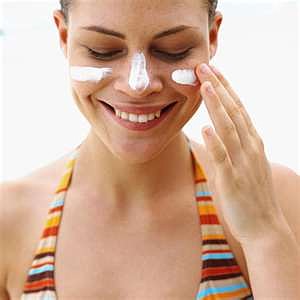Children’s Sunscreens Outperform Effectiveness of Adult Sunscreens In EWG Review For 2012
 May 31, 2012
May 31, 2012  Kyriaki (Sandy) Venetis
Kyriaki (Sandy) Venetis The Environmental Working Group (EWG) just came out with its 2012 Sunscreen Guide and the results are surprising.
 Stock photo.
Stock photo.
After researching and rating about 1,800 products within 257 brands, the guide found that “many brands formulate children’s sunscreens with safer, more effective ingredients than those in other (adult) products.”
“About 63 percent of kids’ sunscreens contain effective mineral ingredients that provide good UVA protection, compared to 40 percent of other (adult) sunscreens,” according to the EWG.
The sunscreen guide found that compared to adult sunscreens, most of those with the words ‘baby,’ ‘children,’ or ‘kids’ on the label were less likely to contain allergy causing fragrances or hormone-disrupting chemicals.
The guide found that that about 72 percent of the kids’ sunscreens were fragrances-free, compared to 54 percent of adult sunscreens. Also encouraging was that the potentially hormone-disrupting chemical ‘oxybenzone’ was only found in 37 percent of kids sunscreens, compared to 56 percent of adult sunscreens.
On the less encouraging side, the EWG also said, “We uncovered 16 brands that list the same exact ingredients in their children’s products as in their other products – down to the exact percentage of active ingredients.”
For these brands, “the word ‘children’ on the label may be just a marketing gimmick,” added the EWG, also advising that mineral sunscreens are “the right choice for children, people with sensitive skin and others who want the best UVA protection without potentially hormone-disrupting chemicals like oxybenzone.”
Mineral sunscreens contain sun barriers that aren’t absorbed into the skin, but lay on top, such as zinc oxide and titanium dioxide.
After reviewing the products, the EWG determined that “mineral sunscreens have the best safety profile of today’s choices. They are stable in sunlight and do not appear to penetrate the skin. They offer UVA protection, which is sorely lacking in most of today’s sunscreen products.”
The EWG also recommended selecting sunscreens that don’t contain vitamin A, saying that while eating vitamin A-laden vegetables is good for you, spreading vitamin A on you may not, because of its interaction with sunlight.
“Government data shows that tumors and lesions develop sooner on skin coated with vitamin A-laced creams. Scientist have known for some time that vitamin A can spur excess skin growth (hyperplasia) and that in sunlight it can cause free radicals that damage DNA,” said the EWG.
Vitamin A, listed as ‘retinyl palmitate’ on ingredient labels, is in one-forth of sunscreens on the market.
The EWG also recommends avoiding powder and spray sunscreens, saying that, “Sprays and powders cloud the air with tiny particles of sunscreen that may not be safe to breathe,” adding that it is “especially concerned about inhalation of nano-or microsize zinc and titanium in powdered sunscreens (which may eventually damage lungs). Inhalation is a much more direct route to exposure to these compounds than skin penetration, which appears to be low in healthy skin.”
In addition, the EWG recommends that consumer avoid using sunscreens that contain bug sprays, saying that, “Most worrisome is the fact that sunscreens often contain penetration enhancers. Studies indicating that concurrent use of sunscreens and pesticides leads to increased skin absorption of pesticide.”
For children under six months old, it’s recommended that sunscreens be avoided entirely, favoring limited exposure to the sun, use of hats, and other protective clothing.
For all other, the EWG advises that they should apply sunscreen generously about 30 minutes before going into the sun and then reapplying it about every two hours. Also limit sun exposure and wear protective clothing, and limit exposure between 10 a.m. and 4 p.m.
Reader comments and input are always welcomed!

Reader Comments